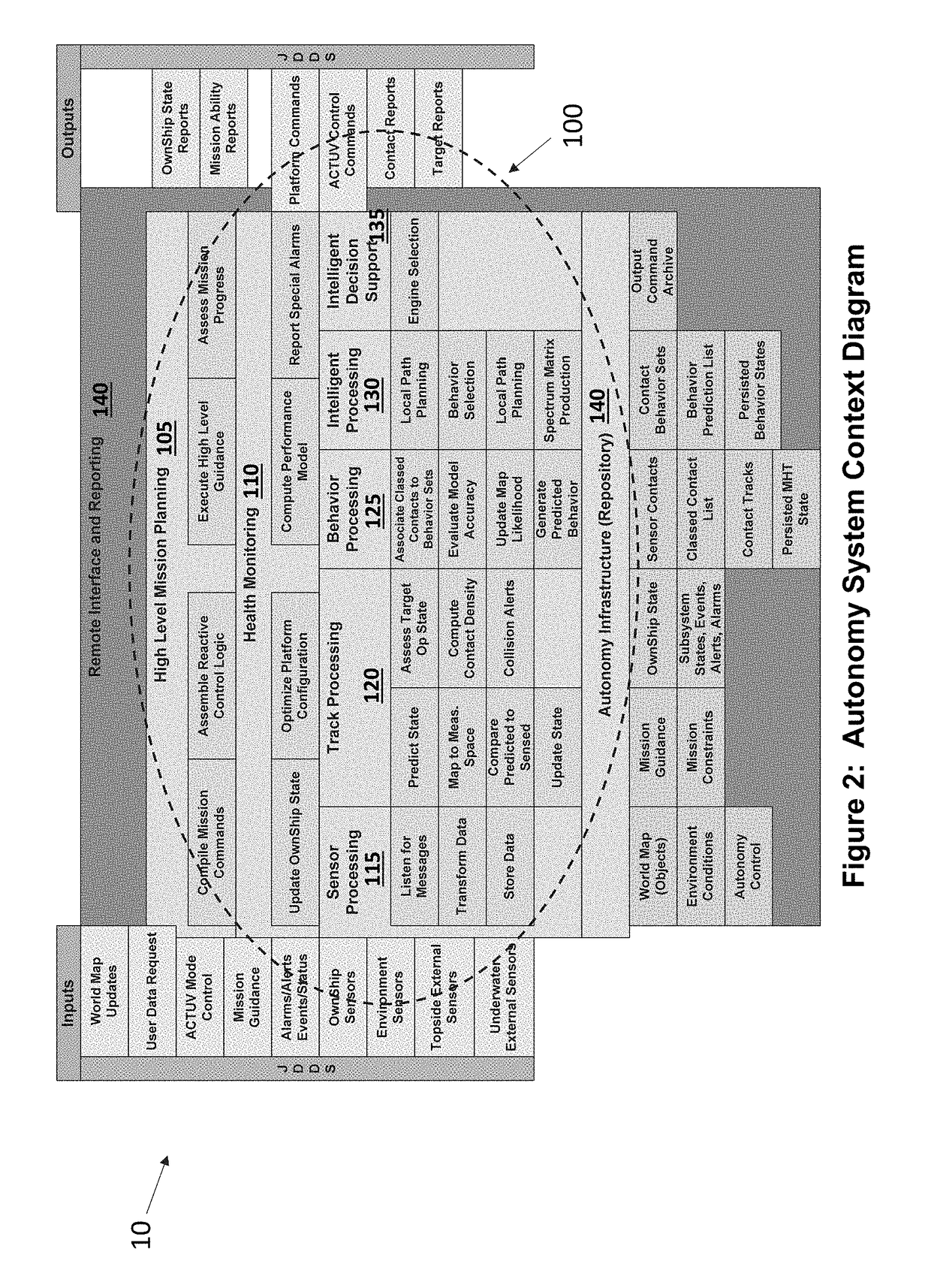System and Method For Fusion of Sensor Data to Support Autonomous Maritime Vessels
a sensor data and autonomous maritime technology, applied in special purpose vessels, steering initiations, instruments, etc., can solve the problems of increasing the number of diesel-electric submarines and presenting a challenge to the united states naval forces
- Summary
- Abstract
- Description
- Claims
- Application Information
AI Technical Summary
Benefits of technology
Problems solved by technology
Method used
Image
Examples
first embodiment
[0009]In a first embodiment, an autonomous maritime vehicle for use in identifying and tracking maritime vessel contacts is described. The vehicle includes: data fusion architecture implemented on one or more processors for receiving multiple data sets from multiple sensors associated with the autonomous maritime vehicle and fusing the data to determine a state of the current operating environment of the autonomous maritime vehicle, wherein a state of the current operating environment includes identification of one or more maritime vessel contacts and one or more tracks of thereof within the operating environment; and an autonomy decision engine for receiving the fused data from the data fusion architecture and using the fused data in deciding a next action for the autonomous maritime vehicle, wherein the next action is selected from the group consisting of at least one of turning, speed changed, and obstacle avoidance.
second embodiment
[0010]In a second embodiment, an autonomous navigation system for directing an autonomous maritime vehicle is described. The system includes: a sensor processing module; and a track processing module; wherein the sensor processing module receives data inputs from multiple sensors, the data inputs providing information relevant to identification of other maritime vessels within an operational range of the autonomous maritime vehicle and useful for determining a predicted track of each of the other identified maritime vessels by a Multi-Hypothesis Tracking (MHT) algorithm of the track processing module.
third embodiment
[0011]In a third embodiment, a process for directing an autonomous maritime vehicle is described. The process including: receiving data inputs from multiple sensors on the autonomous maritime vehicle at a sensor processing module, the data inputs providing information relevant to identification of other maritime vessels within an operational range of the autonomous maritime vehicle; determining, by a track processing module, a predicted track of each of the other maritime vessels identified un the operational range of the autonomous maritime vehicle; and receiving, by autonomy decision engine, the predicted track data and deciding a next action for the autonomous maritime vehicle, wherein the next action is selected from the group consisting of at least one of turning, speed changed, and obstacle avoidance.
BRIEF DESCRIPTION OF THE FIGURES
[0012]The following figures illustrate various features of the present embodiments.
[0013]FIG. 1 highlights the autonomy functional capabilities of ...
PUM
 Login to View More
Login to View More Abstract
Description
Claims
Application Information
 Login to View More
Login to View More - R&D
- Intellectual Property
- Life Sciences
- Materials
- Tech Scout
- Unparalleled Data Quality
- Higher Quality Content
- 60% Fewer Hallucinations
Browse by: Latest US Patents, China's latest patents, Technical Efficacy Thesaurus, Application Domain, Technology Topic, Popular Technical Reports.
© 2025 PatSnap. All rights reserved.Legal|Privacy policy|Modern Slavery Act Transparency Statement|Sitemap|About US| Contact US: help@patsnap.com



